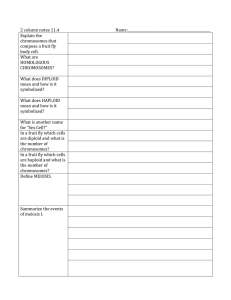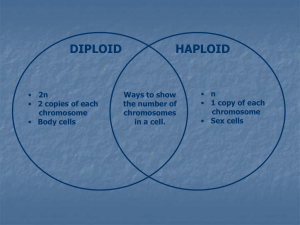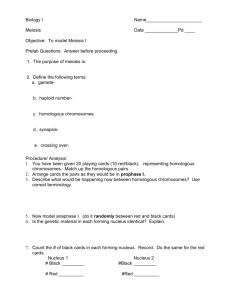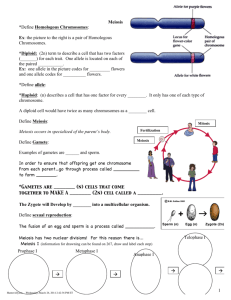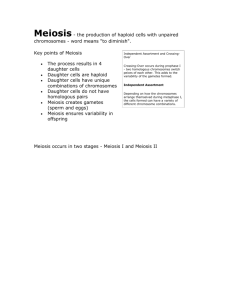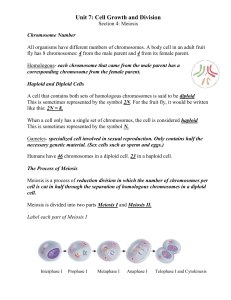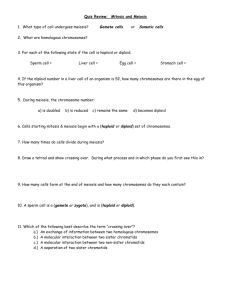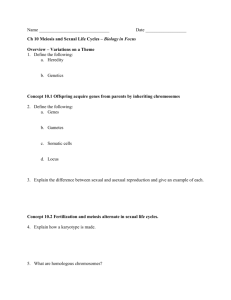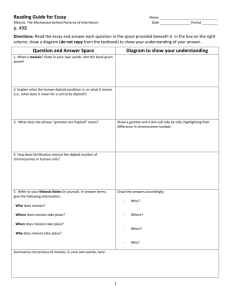Biology Spring Final Review Sheet
advertisement
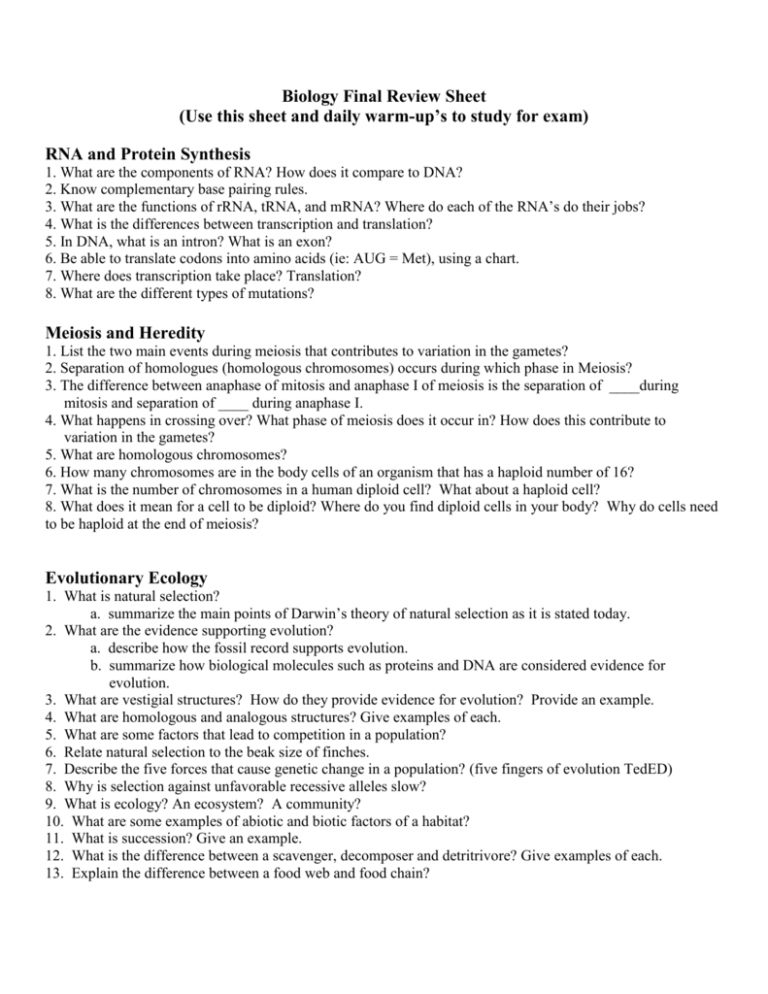
Biology Final Review Sheet (Use this sheet and daily warm-up’s to study for exam) RNA and Protein Synthesis 1. What are the components of RNA? How does it compare to DNA? 2. Know complementary base pairing rules. 3. What are the functions of rRNA, tRNA, and mRNA? Where do each of the RNA’s do their jobs? 4. What is the differences between transcription and translation? 5. In DNA, what is an intron? What is an exon? 6. Be able to translate codons into amino acids (ie: AUG = Met), using a chart. 7. Where does transcription take place? Translation? 8. What are the different types of mutations? Meiosis and Heredity 1. List the two main events during meiosis that contributes to variation in the gametes? 2. Separation of homologues (homologous chromosomes) occurs during which phase in Meiosis? 3. The difference between anaphase of mitosis and anaphase I of meiosis is the separation of ____during mitosis and separation of ____ during anaphase I. 4. What happens in crossing over? What phase of meiosis does it occur in? How does this contribute to variation in the gametes? 5. What are homologous chromosomes? 6. How many chromosomes are in the body cells of an organism that has a haploid number of 16? 7. What is the number of chromosomes in a human diploid cell? What about a haploid cell? 8. What does it mean for a cell to be diploid? Where do you find diploid cells in your body? Why do cells need to be haploid at the end of meiosis? Evolutionary Ecology 1. What is natural selection? a. summarize the main points of Darwin’s theory of natural selection as it is stated today. 2. What are the evidence supporting evolution? a. describe how the fossil record supports evolution. b. summarize how biological molecules such as proteins and DNA are considered evidence for evolution. 3. What are vestigial structures? How do they provide evidence for evolution? Provide an example. 4. What are homologous and analogous structures? Give examples of each. 5. What are some factors that lead to competition in a population? 6. Relate natural selection to the beak size of finches. 7. Describe the five forces that cause genetic change in a population? (five fingers of evolution TedED) 8. Why is selection against unfavorable recessive alleles slow? 9. What is ecology? An ecosystem? A community? 10. What are some examples of abiotic and biotic factors of a habitat? 11. What is succession? Give an example. 12. What is the difference between a scavenger, decomposer and detritrivore? Give examples of each. 13. Explain the difference between a food web and food chain? 14. What would the primary producers be in a (a) water ecosystem? (b) grassland? 15. What are the herbivores? Carnivores? Omnivores? Give examples of each. 16. Explain the relationship of energy transfer in an energy pyramid. How much energy gets transferred from one level to the next? a. describe why food chains are rarely longer than three or four links. 17. What are precipitation and evaporation? Which geochemical cycle are there terms related to? 18. Summarize by words or diagram the geochemical cycles: water, carbon and nitrogen. a. what role do bacteria play in the nitrogen cycle. 19. What is coevolution? Give an example. 20. Write out the definitions of the following types of symbiosis and give an example of each: commensalism, competition, mutualism and parasitism. 21. What are biomes? List all the major terrestrial biomes and two characteristics of each. 22. What does the competitive exclusion principle state? 23. Describe how competition affects an ecosystem. 24. Summarize the importance of biodiversity. Physiology & Homeostasis 1. What is the function of the Central Nervous System (CNS) and the Peripheral Nervous System (PNS)? 2. Label a neuron with the following: Dendrites, Cell Body, Axon, Myelin sheath, Axon Terminal, Synapse 3. How is the flow of a signal carried down neurons (start to finish)? 4. How does the body’s response to hormones compare to its response to nerve impulses? 5. What is negative feedback/feedback inhibition? 6. What are the functions of the circulatory system? 7. How will exercising improve your circulatory system? 8. What is the function of red blood cells (rbc) and white blood cells (wbc)? 9. Which body system has final control over breathing (hint: it’s NOT the respiratory system)? IMMUNITY & DISEASE 1. Explain the difference between nonspecific and specific defenses. List three examples of each. 2. What are antibodies? What do they act on? Explain the role they play in our response to infection. 3. What is the difference between passive and active immunity? Give an example of each. 4. How does a vaccination protect an individual from an infectious disease? Give examples of vaccinations that you have received.


